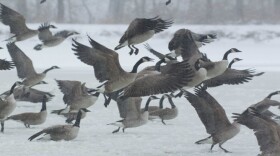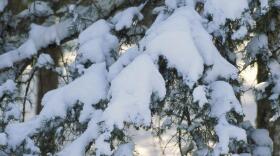-
While on the road this holiday season, be on the lookout for these roadside dive-bombers: American kestrels.
-
You see them at any given park pond, but what’s the story behind those geese?
-
Our most common native evergreen is the eastern red cedar, a cone-shaped juniper with a spicy yuletide aroma. It's prickly, scale-like leaves are quite different from those of spruce, fir, or pine. But it's symmetrical shape and fresh scent make cedar a yuletide choice.
-
Blue jays are relatively large songbirds (about the size of a robin) with blue upperparts and whitish underparts. A blue crest on the head can be raised or lowered depending on the bird’s mood.
-
As you drive country highways, it sometimes seems that hawks are everywhere -- perched on telephone poles and fence posts or circling overhead.
-
If you venture out near the woods after dark, you might hear the high-pitched cry of a flying squirrel.
-
Look around the Mississippi flyway this fall, and you may see the greater or lesser scaup ("SKOPP"). Scaups are diving ducks that can fully submerge and swim underwater for food.
-
Discover Nature this week with Missouri’s creepy critters. It's that spooky time of year -- when plastic bats and spiders abound. But the real critters are not as scary as people think – plus, they bring benefits.
-
November is prime mating season for white-tailed deer. It's not too hard to see deer today, but around 100 years ago they were hard to spot.
-
Discover nature this week with Missouri's caterpillars. While all bears are preparing for the winter, it's the familiar fuzzy caterpillar known as the woolly bear that clearly signals that cold weather is just around the corner.
Play Live Radio
Next Up:
0:00
0:00
Available On Air Stations










